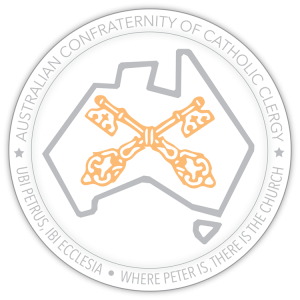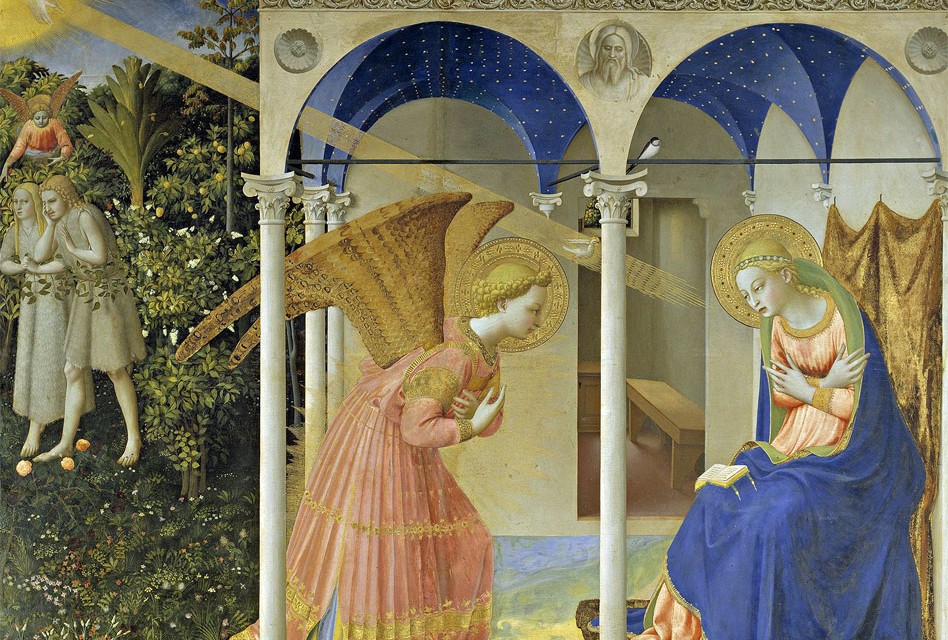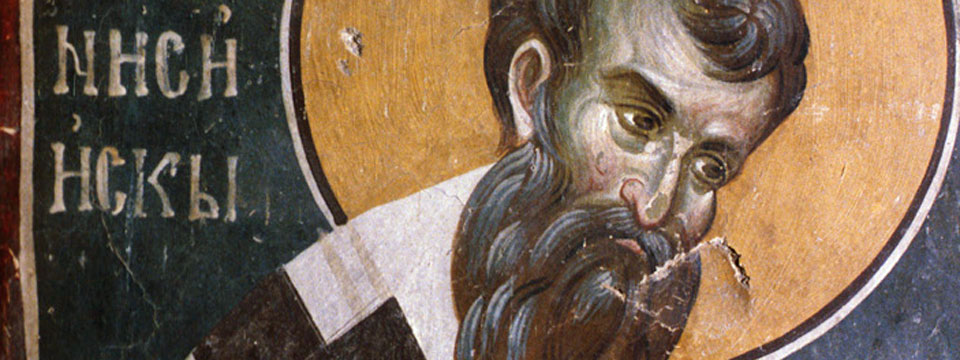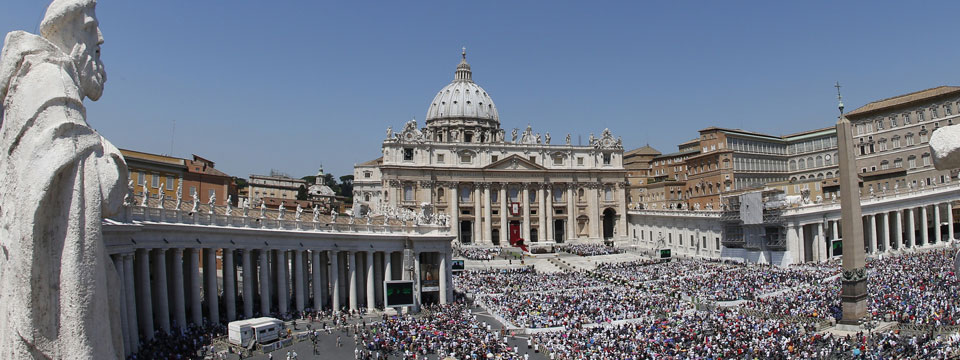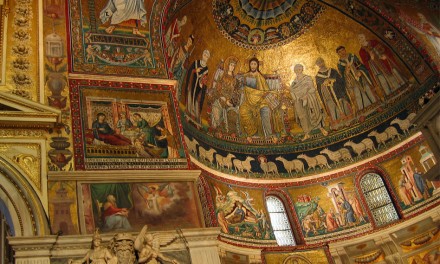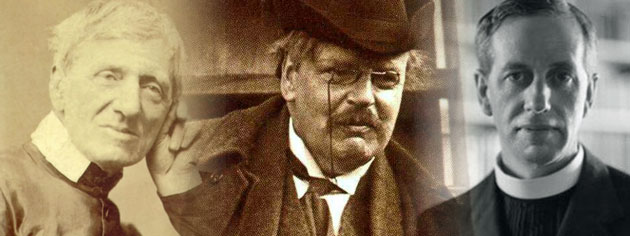In his Post-Synodal Apostolic Exhortation, Pastores Dabo Vobis, Pope St John Paul II dealt with the matter of “The Formation of Priests in the Circumstances of the Present Day.” Towards the end of that document he said this:
Every aspect of priestly formation can be referred to Mary, the human being who has responded better than any other to God’s call. Mary became both the servant and the disciple of the Word to the point of conceiving, in her heart and in her flesh, the Word made man, so as to give him to mankind. Mary was called to educate the one eternal priest, who became docile and subject to her motherly authority. With her example and intercession the Blessed Virgin keeps vigilant watch over the growth of vocations and priestly life in the Church.{{1}} [[1]]John Paul II, Pastores Dabo Vobis (25 March 1992), no. 82.[[1]]And so we priests are called to have an ever firmer and more tender devotion to the Virgin Mary and to show it by imitating her virtues and praying to her often.
Print Friendly Format
Download and view this article as it appeared in the Winter 2015 issue of The Priest.
Pastores Dabo Vobis
In this short passage St John Paul II refers to 4 main things:- Mary is the one human being who responded better than anyone else to the call of God. She knows what vocation is.
- In her vocation Mary is both servant and disciple of the Lord. She is his servant by being a Mother to Him in all of the ordinary things of life. But she is also His disciple: she learns from Him.
- Part of her servant role is to educate Jesus, the one eternal priest who accepts, in all docility, her motherly authority.
- Mary keeps watch over all those men who participate in the priesthood of her Son.
The decline of Marian devotion after Vatican II
One of the things I, as a non-Catholic, noticed in the immediate aftermath of the Second Vatican Council was the apparent abandonment of Marian devotion in this country. Some clergy I know referred to Marian devotion as part of ‘the pre-conciliar Church,’ something out of which Catholics needed to grow. One expert in Marian studies, Fr James Phalan, president of the Mariological Society of America, recently observed that devotion to Mary and Mariology had “collapsed” in many regions after the Second Vatican Council. And this occurred despite the fact that the Council fathers had upheld her critical place within the Catholic faith. Why did this occur? Fr Phalan says that it was partly to do with the Council’s decision to integrate a draft text on Mary into a larger dogmatic text, Lumen Gentium, rather than publishing it as a separate document. This, says Fr Phalan, sent an unintended message to the rest of the Church.{{2}} [[2]]See Carol Glatz, ‘Misreading of Vatican II led to collapse in Marian studies,’ in The Record, 16 September 2012: http://tiny.cc/glatz[[2]] On the other hand, on 8 September 2012, Pope Benedict XVI made this observation about the integration of the document on Mary with Lumen Gentium, based upon his personal experience of the Council:In the Council, in which I took part as an expert when I was a young theologian, I had a chance to see the various ways of dealing with the questions about the figure and role of the Blessed Virgin Mary in the history of salvation. In the second session of the Council a large group of the fathers asked that Our Lady be treated in the constitution on the Church, while a group of similar size supported the necessity of a specific document that adequately shed light on the dignity, the privileges and the singular role of Mary in the redemption wrought by Christ. With the vote on October 23, 1963, it was decided to opt for the first proposal and the schema of the dogmatic constitution on the Church was enriched with the chapter on the Mother of God, in which the figure of Mary — reinterpreted and reproposed in the context of the Word of God, the texts of the patristic and liturgical traditions, as well as a broad theological and spiritual reflection — appears in all of its beauty and singularity, well inserted in the fundamental mysteries of the Christian faith. Mary, whose faith is the focus, is situated in the mystery of the love and communion of the Most Holy Trinity; her cooperation in the divine plan of salvation and in the unique mediation of Christ is clearly affirmed and properly highlighted, making it thereby a model and point of reference for the Church, who recognizes herself, her vocation and her mission in Mary.{{3}} [[3]]Benedict XVI gave this address on 8 September 2012, when he received in audience participants of the 23rd International Mariological Congress: http://tiny.cc/b16-mariology[[3]]Father Phalan agrees with Pope Benedict about the way in which the Council meant us to understand Marian teaching.{{4}} [[4]]For an interesting discussion on the role of Karl Rahner at the Second Vatican Council in relation to the decision to fuse the document on Mary into Lumen Gentium see Timothy J Sauppe, “Decoding Vatican II’s Marian Paradigm Shift”, Homiletic and Pastoral Review, 26 June 2014: http://tiny.cc/hprweb[[4]] All that notwithstanding, powerful voices within the Catholic Church wanted to see Marian devotion downplayed. For example, the then very influential Hans Küng said this about Marian devotion, a devotion which he wished to see eliminated from the practice of Catholicism.
Marian devotion was shaped by the cult of the Near Eastern mother divinities and also of the Celtic and Germanic goddesses associated with ancient mountain, water and tree sanctuaries.{{5}} [[5]]Hans Küng, On Being A Christian. Translated from the German by Edward Quinn. New York: Doubleday: 1966, 1968 edition, p. 459.[[5]] Marian devotion arose quite definitely in the East and in the form of a cult of the ‘perpetual virgin,’ the ‘Mother of God’ and august ‘Queen of Heaven.’{{6}} [[6]]Küng, On Being A Christian, pp. 459-60.[[6]] This development continued in the Middle Ages . . . While the older Church Fathers had still spoken of Mary’s moral faults, she now began to be credited with perfect sinlessness and the doctrine of her sanctity even before birth, as a result of her preservation from original sin, began to be taught expressly here and there in the West from the twelfth century onwards. Mary was not seen as the ‘embodiment of compassion; and as an intercessor until the time of St Francis and St Bernard.{{7}} [[7]]Küng, On Being A Christian, pp. 460-61.[[7]] During the Counter-Reformation Marian devotion was propagated mainly by the Jesuits in an anti-Protestant spirit.{{8}} [[8]]Küng, On Being A Christian, pp. 461.[[8]]Returning to Fr Phalan, he observed that the bishops felt Mariology, like the Church as a whole, needed to be renewed in light of tradition, liturgy and the Bible. But this was overtaken by the spirit of the times.
“An ‘overly rationalist’ historical approach reduced the role of the Holy Spirit and marginalised most forms of popular devotion,” he said. “Worsening the problem, was the timing: post-Vatican II coincided with the upheaval of the 1970s when religious traditions and beliefs were being intensely questioned or completely dismissed by society.”{{9}} [[9]]Glatz, ‘Misreading of Vatican II,’ The Record, 16 September 2012: http://tiny.cc/glatz[[9]]And this was a society marked by scepticism, especially in matters spiritual and theological, a scepticism which greatly affected the church and especially the clergy and religious in the second half of the twentieth century.
A Marian renaissance
But now we see evidence of a new springtime for Marian devotion. As Father Phalan has put it:“We can see the signs of new growth. There is lots of rebirth in interest in the rosary. There’s lots of desire to understand who Mary is. There are a lot of new movements within the Church that are rediscovering the importance of the Blessed Virgin Mary, prayer of the rosary, and her place in family prayer especially.”{{10}} [[10]]Interview of Father Phalan by Ann Schneible, “Mariology Society of America President Reflects on Rosary and Our Lady’s Comeback”, Zenit, 6th September 2012: http://tiny.cc/schneible[[10]]A crucially important catalyst for the resurgence of Marian devotion was St John Paul II who, in his teaching, set about restoring Marian devotion, especially among the clergy, reminding us that the “biographies of saintly priests always document the great role they attributed in their spiritual life to Mary.”{{11}} [[11]]John Paul II, ‘Priests must foster devotion to Mary,’ General Audience of June 30, 1993. Ench. Vat., IV, 1202.: http://tiny.cc/jp2[[11]] In this document, Saint John Paul II refers approvingly of the 1971 Synod of Bishops which made this recommendation:
With his mind raised to heaven and sharing in the communion of saints, the priest should very often turn to Mary, the Mother of God, who received the Word of God with perfect faith, and daily ask her for the grace of conforming himself to her Son.{{12}} [[12]]John Paul II, ‘Priests must foster devotion to Mary,’ http://tiny.cc/jp2[[12]]He goes on to say that “the profound reason for the presbyter’s devotion to Mary most holy is based on the essential relationship established in the divine plan between the Mother of Jesus and the priesthood of her Son’s ministers.” In this extraordinary and often overlooked document he makes the following points:
- Mary’s relationship to the priesthood derives primarily from the fact of her motherhood. Becoming the Mother of Christ by her consent to the angel’s message, Mary became the Mother of the high priest.
- There is a perfect correspondence between Mary and her Son at the Incarnation. Indeed, the Letter to the Hebrews reveals to us that when he “came into the world,” Jesus gave a priestly orientation to his personal sacrifice and said to God: “Sacrifice and offering you did not desire, but a body you prepared for me . . . Then I said, ‘Behold, I come to do your will, O God.’” (Heb 10:5-7) The Gospel tells us that at the same moment the Virgin Mary expressed the same attitude, saying: “Behold, I am the handmaid of the Lord. Be it done unto me according to your word.” (Lk 1:38) This perfect correspondence shows us that a close relationship has been established between Mary’s motherhood and Christ’s priesthood. By that very fact a special bond exists between the priestly ministry and Mary most holy.
- As we know, the Blessed Virgin fulfilled her role as mother not only in physically begetting Jesus but also in his moral formation. In virtue of her motherhood, she was responsible for raising the child Jesus in a way appropriate to his priestly mission, the meaning of which she learned from the message of the Incarnation.
- Our Lady fully lived the mystery of Christ, which she discovered ever more deeply through her personal reflection on the events of her Son’s birth and childhood. (Cf. Lk 2:19; 2:51.)
- With mind and heart she strove to fathom the divine plan in order consciously and effectively to cooperate in it. Who today better than she, could enlighten the ministers of her Son, leading them to fathom the ‘unspeakable riches’ of his mystery in order to act in conformity with his priestly mission?
- Mary was uniquely associated with Christ’s priestly sacrifice, sharing his will to save the world by the cross. She was the first to share spiritually in his offering as sacerdos et hostia, and did so most perfectly. As such, she can obtain grace to those who share in her Son’s priesthood on the ministerial level, the grace moving them to respond ever more fully to the demands of spiritual oblation that the priesthood entails: in particular, the grace of faith, hope and perseverance in trials, recognized as a challenge to share more generously in the redemptive sacrifice.
- On Calvary Jesus entrusted a new motherhood to Mary when he said to her: ‘Woman, behold your son!’ (Jn 19:26) We cannot overlook the fact that when this motherhood was proclaimed, it was in regard to a ‘priest,’ the beloved disciple. In fact, according to the Synoptic Gospels, John also received from the Master at the supper on the previous night the power to renew the sacrifice of the cross in his memory. With the other apostles he belonged to the group of the first priests; now at Mary’s side he replaced the one, supreme priest who was leaving the world.
What should we ask of Mary as “Mother of priests”?
Today, perhaps more than at any other time, the priest must ask Mary especially for the grace of knowing how to accept God’s gift with grateful love, fully appreciating it as she did in the Magnificat — the grace of generosity in self-giving, in order to imitate her example as a “generous Mother;” the grace of purity and fidelity in the obligation of celibacy, following her example as the “faithful Virgin;” the grace of burning, merciful love, in the light of her witness as the “Mother of Mercy.”{{13}} [[13]]John Paul II, ‘Priests must foster devotion to Mary,’ http://tiny.cc/jp2[[13]]We as presbyters must, says St John Paul II, “always remember that in the difficulties [we] will meet [we] can count on Mary’s help.” Finally, the priest “looks to her as the perfect model of his life and ministry, because she is the one, as the Council says, who “was led by the Holy Spirit to dedicate herself totally to the mystery of man’s redemption. Let priests love and venerate with filial devotion and veneration this mother of the eternal high priest, Queen of Apostles and protector of their own ministry.”{{14}} [[14]]Presbyterorum Ordinis, 7 December 1965, no. 18.[[14]]
I urge my brothers in the priesthood to nourish this “true devotion to Mary” and to draw its practical consequences for their life and ministry. I urge all the faithful to join us priests in entrusting themselves to our Lady and in invoking her graces for themselves and for the whole Church.{{15}} [[15]]John Paul II, ‘Priests must foster devotion to Mary,’ http://tiny.cc/jp2[[15]]Seeing what we do as well as what we say, people will begin to understand even more deeply that Mary is the mother of priests in a specific and crucially important way. And they will themselves venerate even more passionately she who is also their mother too. More recently Pope Benedict reminded priests of the crucial role of our Lady in our spiritual lives:
Let us now go to the Cross. Before dying, Jesus sees his Mother beneath the Cross and he sees the beloved son. This beloved son is certainly a person, a very important individual, but he is more; he is an example, a prefiguration of all beloved disciples, of all the people called by the Lord to be the ‘beloved disciple’ and thus also particularly of priests. Jesus says to Mary: “Woman, behold, your son!” (Jn 19: 26) It is a sort of testament: he entrusts his Mother to the care of the son, of the disciple. But he also says to the disciple: “Behold, your mother!” (Jn 19: 27). The Gospel tells us that from that hour St John, the beloved son, took his mother Mary “to his own home.” This is what it says in the translation; but the Greek text is far deeper, far richer. We could translate it: he took Mary into his inner life, his inner being, “eis tà ìdia,” into the depths of his being. To take Mary with one means to introduce her into the dynamism of one’s own entire existence. It is not something external. And into all that constitutes the horizon of one’s own apostolate. It seems to me that one can, therefore, understand how the special relationship of motherhood that exists between Mary and priests may constitute the primary source, the fundamental reason for her special love for each one of them. In fact, Mary loves them with predilection for two reasons: because they are more like Jesus, the supreme love of her heart, and because, like her, they are committed to the mission of proclaiming, bearing witness to and giving Christ to the world. Because of his identification with and sacramental conformation to Jesus, Son of God and Son of Mary, every priest can and must feel that he really is a specially beloved son of this loftiest and humblest of Mothers. The Second Vatican Council invites priests to look to Mary as to the perfect model for their existence, invoking her as “Mother of the supreme and eternal Priest, as Queen of Apostles, and as Protectress of their ministry.”{{16}} [[16]]Benedict XVI, General Audience, Papal Summer Residence, Castel Gandolfo, Wednesday, 12 August 2009: http://tiny.cc/b16. Emphasis added.[[16]]As priests, then, we not only have a special relationship with our Lady but also a requirement to foster veneration to the Mother of God among the people.
Practical ways to further foster veneration of the Theotokos
- Celebrate Masses of our Lady on Saturday at all opportunities.
- Celebrate Feasts and Solemnities of our Lady proper with all due solemnity.
- Preach homilies on our Lady during these Masses and at other times
- After Mass stop at statue of our Lady and say or, better still, sing the Salve Regina.
- Recover Marian hymns for use at Masses from the tradition. If you don’t know them, learn them, and see the people are taught them.
- Promote the saying of the Rosary and other devotions, perhaps before weekday Masses.
- Acquire and use Marian Vestments.
- Attend to the shrine of our Lady in the Church, seeing that the shrine is always vibrant with flowers and other beautiful and tasteful accoutrements.
O Mary, Mother of Jesus Christ and Mother of priests, accept this title which we bestow on you to celebrate your motherhood and to contemplate with you the priesthood of your Son and of your sons, O holy Mother of God. O Mother of Christ, to the Messiah-priest you gave a body of flesh through the anointing of the Holy Spirit for the salvation of the poor and the contrite of heart; guard priests in your heart and in the Church, O Mother of the Saviour. O Mother of Faith, you accompanied to the Temple the Son of Man, the fulfillment of the promises given to the fathers; give to the Father for his glory the priests of your Son, O Ark of the Covenant. O Mother of the Church, in the midst of the disciples in the upper room you prayed to the Spirit for the new people and their shepherds; obtain for the Order of Presbyters a full measure of gifts, O Queen of the Apostles. O Mother of Jesus Christ, you were with him at the beginning of his life and mission, you sought the Master among the crowd, you stood beside him when he was lifted up from the earth consumed as the one eternal sacrifice, and you had John, your son, near at hand; accept from the beginning those who have been called, protect their growth, in their life ministry accompany your sons, O Mother of Priests. Amen.
